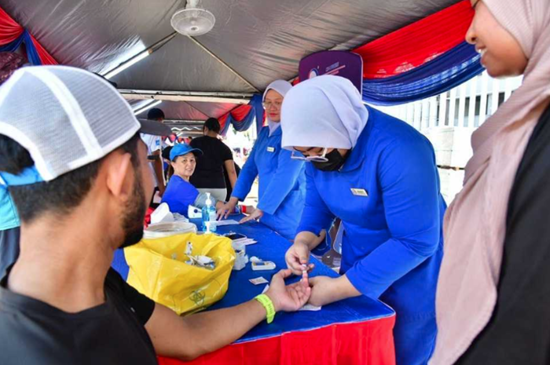
The NICU Influence
During her time with WoMB, Rubien honed her skills in both lab and clinical work while also volunteering in the neonatal intensive care unit (NICU) shadowing the neonatal team and doing NICU cuddling, “which is as cute as it sounds,” she says.
NICU cuddling provides essential physical comfort to premature babies by trained volunteers. Such human contact and attention helps vulnerable newborns with development, reduces stress, and improves overall health outcomes.
“This experience exposed me to how team-based neonatology and pediatrics is and just how resilient kids are,” Rubien says. “It was really amazing to see how much fight they had in them. It makes me even more confident in my decision to go into medicine.”
Ana Leonard, M27.
Photo: Courtesy of Ana Leonard
While working in Yen’s lab, Leonard also spent time in the NICU, where she says the environment and type of medicine practiced was very different from anything she had seen before. The whole-body medicine of the NICU combined with addiction medicine confirmed the type of medicine and patient populations Leonard would like to focus on throughout her medical career.
“As a woman who identifies as Latina, we’re underrepresented in the medical industry,” she says. “From my experience growing up in Puerto Rico, which is itself a medically underserved place, I always knew I wanted to go to medicine and work in an underserved community with vulnerable populations. I’m very focused on social determinants of health and how they affect our communities.”
While working with WoMB, Leonard is involved in part of Yen’s study that compares MRIs of opioid-exposed and non-exposed babies’ brains. The scans are sent to a partner hospital that conducts a preliminary color-coding of different regions of the brain. The scans are then returned to Yen’s lab for Leonard to conduct manual corrections. The final image is analyzed to determine the relative volumes of each region of the brain.
Preliminary results have shown that maternal opioid use reduces offspring brain volume compared to non-exposed infants, with worsened outcomes for newborns exposed to more than one substance, such as opioid use in combination with cannabis.
“Working with WoMB has opened my eyes to different parts of medicine that has left me wondering if I’d like to continue doing research after medical school,” Leonard says. “I’ve now seen that there’s so much more research to be done.”
Filling a Need
As director, O’Tierney-Ginn has seen many students like Lin, Rubien, and Leonard who she says have become increasingly enthusiastic about answering these research questions.
“People are digging in,” O’Tierney-Ginn says. “People are more determined than ever. They’re excited to keep going in these spaces. They know there’s a need.”
With recent threats to funding, 75% of which WoMB receives from federal sources, O’Tierney-Ginn believes that everyone, not just students and researchers, need to support the type of work being conducted at WoMB.
“We should all care about women’s health because it impacts future generations of all genders,” she says.
link








